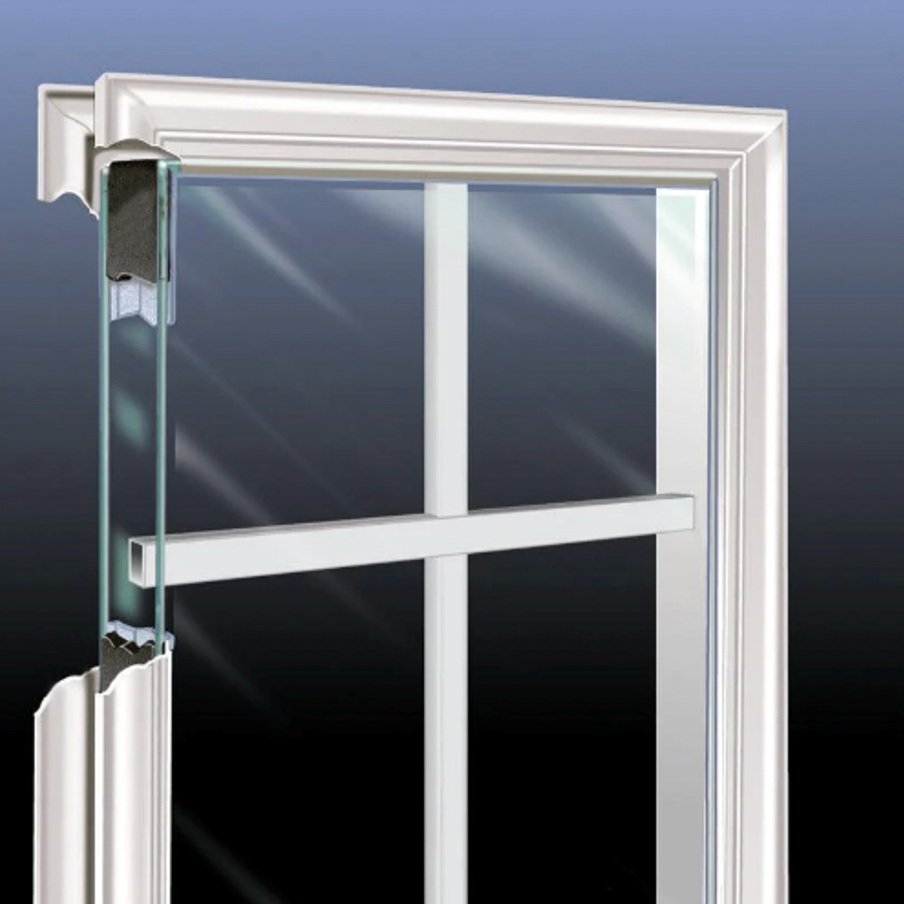Simulated Divided Light vs. Snap in Grills for Windows
An Intro to insulated glass
Grill configuration options from Andersen Windows.
First, a little background: modern windows are made as an assembly like a sandwich with with double (or sometimes triple) layers of glass with spacing between them, usually filled with Argon gas, which has 50% less heat conduction than air. This assembly is called insulated glass (IG) and generally a window or door sash will be made with one unit of insulated glass. To achieve a colonial or other decorative look, grills (in the old days called muntins) are added over the glass for a historic look in lots of configurations.
WINDOW OPTIONS
1. Simulated Divided Light: most authentic
The most authentic looking way to achieve the look of panes of glass is called Simulated Divided Light (or SDL) where a permanent grill is installed by the manufacturer on both the exterior and the interior. The interior is generally wood to match the window interior, and most commonly the exterior grill is “clad” to match the maintenance free exterior of most modern windows.
Spacer Bar Option: Because there is an air space between the two panes of glass, the two grills can look a little strange unless the manufacturer puts a spacer bar inside the glass between the two grills to make the grills feel more solid. We use this option on all of the simulated divided light windows we buy for clients. Some manufacturers, including Andersen, call Simulated Divided Light with a spacer “Full Divided Light”.
COST: These factory built and installed grills are real woodwork, with proper routed joinery and are more expensive than a “snap in grill” and can add 20% (or more for custom patterns) to the cost of a window.
Simulated Divided Light
Full Divided Light
2. Snap-in Grills: low cost and easy clean
A less expensive option offered by most manufacturers is a grill in the pattern of your choice that is shipped separately that “snaps” in to the window sash at the interior. This would be installed by your window installer or builder on site. Andersen’s snap in grills have made progress over the years and they are less flimsy and more authentic looking now, so many people might not notice the difference at the interior.
View from the Exterior: Snap in grills don’t have any grill at the exterior, so they are a bit less convincing when viewed from outside.
Window type Matters: Common double hung style windows have the screen on the outside, concealing any window grill a bit. From the curb, even a trained eye can often not tell if the grills are “SDL” or snap in at the interior only.
Casement windows have their screens inside, so the missing exterior grill is more evident at the exterior and the practiced eye will notice the missing grill at the exterior.
Cleaning: A nice advantage of “snap in grills” is that cleaning the exterior is easier since there are no dividers at the exterior. The manufacturers advertise that you can remove the grill for easy cleaning at the interior, but installing the grills is a little fussy and I don’t know anyone who does this. By the time you carefully remove and replace the grill you could have cleaned the window already.
Double Hung Windows with Snap-in grills & Screen Outside
3. Between the Glass Grills: easy clean
This is the least convincing style of grills, but also the most convenient. The grills go between the two panes of insulating glass, so they can’t get dirty and cleaning the windows is super easy. If you go for this option, be sure to at least get “contoured” between the glass grills that have the traditional shape routed into them. The flat profile between the glass grills looks like tape and are frankly pretty cheesy looking!
Contoured Grills Between Glass
Flat Grills Between the Glass
4. True Divided Light: mostly a thing of the past
Historically, windows were made from small single panes of glass set into a wood grill which was part of the window sash. This is called “True Divided Light” or TDL Since you cannot meet modern energy codes with single pane glass, we can generally not use a truly historically accurate single pane TDL window in a renovation.
A double pane TDL could be suitable for a true historic restoration project where authenticity is of the highest priority. A bit of engineering has to go into building a TDL window with grills thick enough to fit a double pane of glass inside each muntin or grill section. Even with a double pane, this window would have to be less airtight than an SDL window where the glass is all one piece with no seams, and of course, be prepared for the cost.
Conclusion: see the window in person!
If you are in doubt about the look of the window, and whether the extra cost of the simulated divided lights is worth it, there’s no substitute for a showroom visit. Even though this article explains the options with diagrams and visuals, in order to experience the “look and feel” it’s best to see the window in person. Thank goodness that in our digital age, there are still some good showrooms for just this reason. Here’s two of our industry partners with excellent showrooms to check out:
Interstate Lumber: 184 South Water St., Greenwich, CT 06830, Rich: 203.413.5250, Keith: 203.413.5255
Ridgefield Supply: 29 Prospect St., Ridgefield, CT 06877, Joe Spitzer: 203.994.2669






